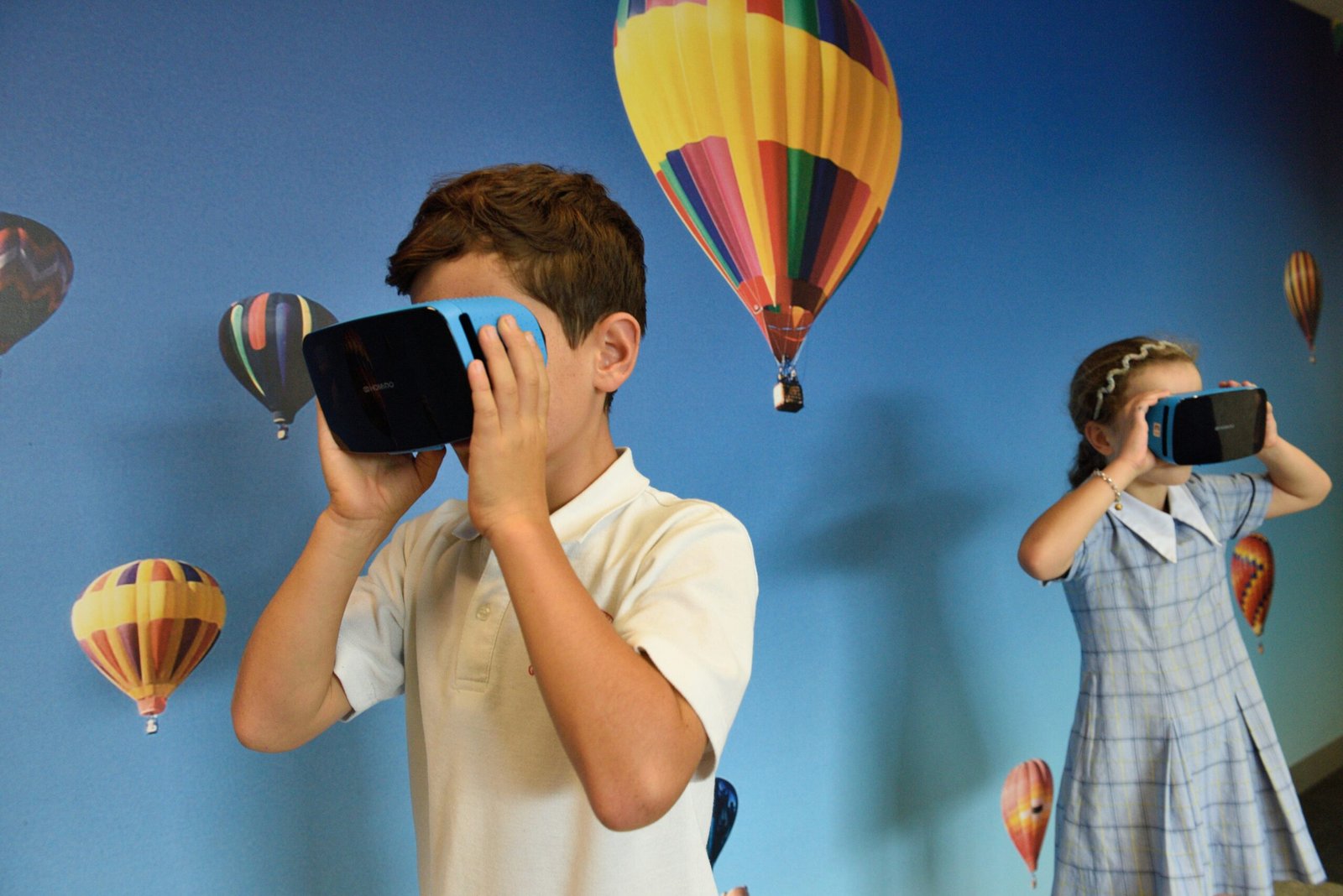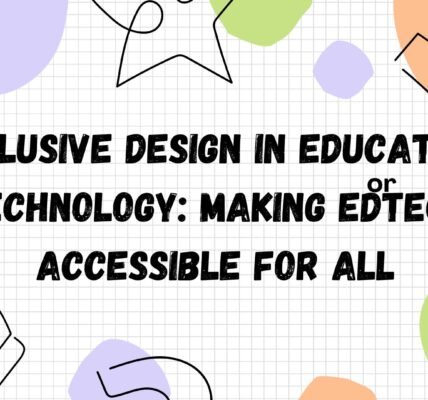Technology has always played a major role in education. But today, a new player is revolutionizing how students learn science—Virtual Reality (VR). VR labs in science education offer students an exciting and immersive way to explore complex scientific concepts. Unlike traditional labs, VR labs create a virtual world where students can experiment, test, and learn with ease.
This blog will dive into how VR labs are transforming science education, why they matter, and what the future holds for this incredible technology.
What Are VR Labs?
Virtual Reality (VR) labs are simulated environments that mimic real-life scientific experiments. Students wear VR headsets and enter a digital space where they can conduct experiments, explore environments, and interact with 3D objects.
In traditional labs, schools often face limitations due to resources, safety concerns, or accessibility. But with VR labs in science education, students can perform a wide range of experiments without worrying about these constraints.
For example, students can dive into the ocean to study marine life, travel to space to learn about astronomy, or zoom into cells to understand biology better. All of this happens within the safety of the classroom, making VR labs a powerful tool in science education.
Benefits of VR Labs in Science Education
The impact of VR labs in science education is undeniable. Virtual Reality is reshaping how students engage with scientific concepts, making learning more interactive and enjoyable. Below are some key benefits of incorporating VR labs in science education.
1. Immersive Learning Experience
One of the biggest advantages of VR labs is the immersive learning experience they provide. Instead of passively reading about scientific concepts, students can actively participate in virtual experiments. This interactive approach engages students, helping them retain information better.
For example, rather than simply reading about the structure of a cell, students can explore it in 3D. They can zoom in, rotate, and interact with each part, leading to a deeper understanding of biology.
VR labs allow students to explore environments that might be impossible to visit in real life. They can travel to space, examine the Earth’s core, or observe chemical reactions up close. These immersive experiences help students grasp abstract concepts with ease.
2. Access to Advanced Equipment
Not all schools have access to advanced lab equipment. Many schools struggle with budget constraints, making it difficult to provide students with the tools they need. VR labs in science education solve this problem by offering a virtual environment equipped with state-of-the-art tools.
For instance, students can use virtual microscopes, chemistry sets, or physics tools that may be too expensive or difficult to obtain in the real world. This levels the playing field for students, ensuring they all have access to the best learning tools regardless of their school’s budget.
With VR labs, every student can perform complex experiments without the fear of breaking expensive equipment. They can practice multiple times, which increases their confidence and mastery of the subject.
3. Enhanced Safety
Safety is a significant concern in traditional science labs. Handling chemicals, operating machinery, or conducting dangerous experiments can pose risks. VR labs eliminate these safety concerns entirely.
Students can perform high-risk experiments without any real danger. For example, they can mix chemicals, observe explosions, or conduct dissections without harming themselves or others. VR labs ensure that students can learn in a safe, controlled environment while still engaging in hands-on science experiments.
This makes VR labs an ideal solution for schools that may avoid certain experiments due to safety concerns.
4. Personalized Learning
Every student learns at a different pace. In a traditional classroom, it can be challenging for teachers to tailor lessons to each student’s needs. VR labs in science education solve this problem by allowing personalized learning experiences.
With VR, students can revisit difficult concepts, pause experiments, or take their time exploring virtual environments. This flexibility enables students to learn at their own pace. It also helps students who may struggle with certain topics gain a better understanding through repeated practice.
Moreover, VR labs often come with built-in analytics that track students’ progress. Teachers can use this data to identify areas where students need extra support and tailor lessons accordingly.
5. Increased Engagement and Motivation
Keeping students motivated and engaged in learning can be challenging. But VR labs in science education are proving to be a game-changer in this area. The interactive nature of VR captivates students’ attention and makes learning fun.
For example, students who find traditional methods of learning boring or difficult may become more enthusiastic when using VR labs. The opportunity to explore virtual worlds, conduct exciting experiments, and learn through experience boosts motivation and engagement.
As a result, students are more likely to remain focused and invested in their education, leading to better learning outcomes.
Real-World Applications of VR Labs
The use of VR labs in science education is not just a theoretical concept. Many schools, universities, and organizations have already embraced this innovative technology. Below are some real-world applications of VR labs in education.
1. Medical Training
In the medical field, VR labs offer aspiring doctors and nurses a realistic way to practice surgical procedures, anatomy, and patient care. For instance, medical students can use VR labs to perform virtual surgeries, allowing them to hone their skills without the risk of harming actual patients.
This hands-on experience helps students build confidence before working in real-life medical environments.
2. Space Exploration
NASA and other space agencies use VR labs to train astronauts for space missions. Students can now participate in similar experiences by using VR to explore the solar system. Virtual space missions allow students to learn about planets, stars, and space travel in an engaging, interactive way.
3. Environmental Science
VR labs are also being used to teach environmental science. Students can use VR to explore forests, oceans, and ecosystems. They can study climate change, observe wildlife, and understand environmental conservation from a first-hand perspective.
The Future of VR Labs in Education
As VR technology continues to advance, its role in education will only grow. The future of VR labs in science education looks promising, with new developments on the horizon. Here are a few trends to watch:
1. Wider Adoption
More schools will adopt VR labs as the technology becomes more affordable and accessible. As costs drop, VR labs will become a standard feature in classrooms, providing students with new learning opportunities.
2. Integration with Other Technologies
VR labs will likely integrate with other emerging technologies, such as Artificial Intelligence (AI) and Augmented Reality (AR). These integrations will create even more immersive and personalized learning experiences for students.
3. Remote Learning Opportunities
With the rise of online learning, VR labs can play a key role in providing remote students with hands-on science experiences. Virtual labs can bridge the gap for students who may not have access to physical labs due to location or resources.
Conclusion
VR labs in science education represent a new frontier in learning. They offer immersive, interactive experiences that make complex scientific concepts more accessible to students. With VR labs, students can explore virtual environments, perform advanced experiments, and learn in a safe, personalized setting.
While VR labs may not replace traditional labs entirely, they offer a powerful supplement to science education. As more schools embrace this technology, we can expect VR labs to play an even larger role in shaping the future of education.





